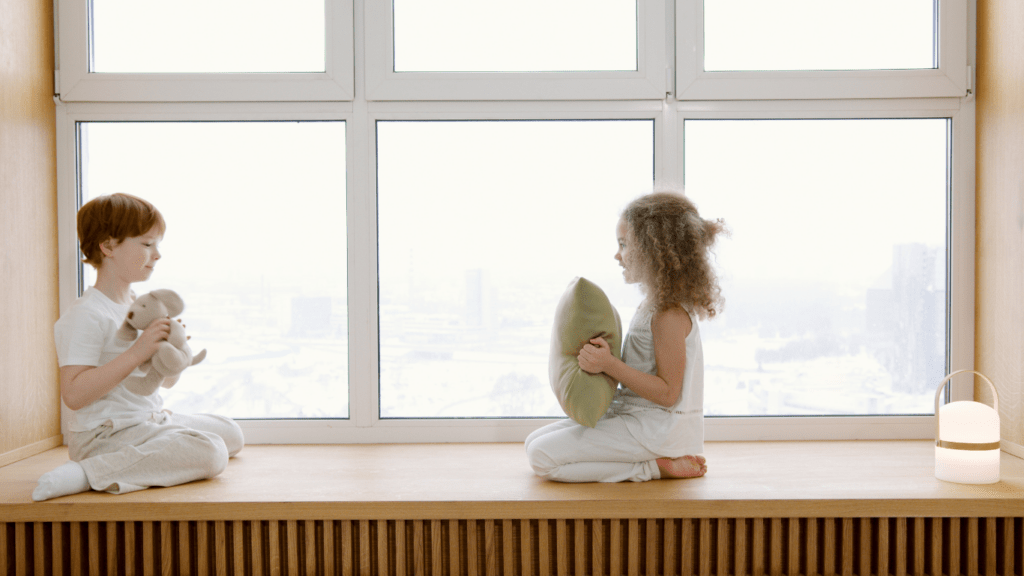Welcoming a new sibling into the family is a joyous occasion, but it can also bring about a mix of emotions for your older children. As a parent, navigating the waters of discussing this exciting change with your kids is crucial in helping them adjust and embrace their new family dynamics.
In this article, I’ll delve into the art of having age-appropriate conversations with your children about their new siblings. From toddlers to teenagers, each age group requires a tailored approach to discussing the arrival of a new brother or sister.
By understanding the developmental stage of your child, you can effectively communicate the upcoming changes and address any concerns they may have. Join me as we explore the importance of open dialogue and how it can foster a positive relationship between siblings right from the start.
Understanding the Need for Age-Appropriate Communication
Understanding the developmental stages of my children is crucial in initiating discussions about a new sibling. Tailoring my conversations based on their ages allows me to convey information effectively and address any concerns they may have.
By recognizing their unique emotional needs, I can facilitate a smoother adjustment period for everyone involved. These age-appropriate discussions set a positive foundation for building strong sibling bonds early on.
Preparation Steps Before Initiating the Conversation
When preparing to talk to your kids about new siblings, consider these essential steps.
Creating a Safe and Comfortable Environment
I ensure the conversation takes place in a cozy setting where my kids feel relaxed.
Choosing the Right Time and Setting
- Choose Calm Moments: Select times when the kids are relaxed and in a good mood, such as after meals or during quiet evenings, to facilitate better communication.
-
Minimize Distractions: Ensure the environment is conducive to conversation by limiting distractions, such as turning off the TV or putting away devices, to enhance focus and engagement.
Talking to Toddlers (Ages 1-3)
When talking to toddlers about new siblings, it’s essential to keep the conversations simple and positive to help them understand the upcoming changes with ease.
Keeping It Simple and Positive
I’ll use straightforward language and positive affirmations to relay the news of a new sibling to toddlers. By using simple words and a cheerful tone, I can create a welcoming atmosphere for them to embrace the idea of a new family member.
Discussing with Preschoolers (Ages 4-6)
Understanding the developmental milestones of preschoolers plays a crucial role in discussing new siblings with them. Preschoolers, typically aged 4 to 6, are curious and eager learners, making it essential to approach conversations about a new sibling with positivity and reassurance.
When addressing preschoolers about a new sibling, I focus on using simple language and emphasizing the exciting aspects of having a new family member. Preschoolers may respond well to visual aids like picture books that showcase the arrival of a new baby.
I encourage parents to involve preschoolers in preparations for the new sibling, such as choosing baby clothes, setting up the nursery, or selecting toys. This involvement helps preschoolers feel included and builds anticipation for the arrival of their new brother or sister.
Parents should be prepared to answer preschoolers’ questions about the new sibling patiently and honestly. It’s important to validate their feelings and offer reassurance that they will still be loved and cared for.
By maintaining open communication and creating a positive environment around the idea of a new sibling, parents can help preschoolers embrace this significant life change with enthusiasm and readiness.
Addressing Concerns with School-Aged Children (Ages 7-12)
Understanding the emotional dynamics of older children, particularly school-aged kids between 7 and 12, is essential when introducing them to the idea of a new sibling. It’s crucial to recognize that children in this age group are more aware of family dynamics and may have a deeper understanding of the changes a new sibling can bring.
Tailoring conversations to resonate with their cognitive development and emotional maturity is key to fostering a positive relationship between siblings. When discussing the arrival of a new sibling with school-aged children, parents should acknowledge any concerns or questions that may arise.
Encouraging open dialogue and active listening can help address their fears or uncertainties about sharing their parents’ attention or the family’s changing dynamic. Validating their emotions and offering reassurance that they will still be loved and supported can provide comfort during this transition.
Incorporating school-aged children in the preparations for the new sibling, such as involving them in setting up the baby’s room or choosing baby names, can create a sense of inclusion and anticipation.
By actively engaging them in these activities, parents can instill a sense of responsibility and excitement about the impending arrival. Moreover, emphasizing the benefits of having a new sibling, such as companionship, shared experiences, and the opportunity to be a role model, can help school-aged children view the situation positively.
Highlighting the joy and bond that siblings can share can aid in fostering enthusiasm and a sense of partnership between the older and younger siblings. Overall, open communication, validation of feelings, and active involvement in preparations are key strategies for addressing concerns and creating a welcoming environment for school-aged children as they prepare to welcome a new sibling into the family.
By acknowledging their emotions and involving them in the process, parents can help their older children navigate this significant life transition with understanding and positivity.
Cultivating Sibling Bonds Through Communication
In initiating conversations about a new sibling, it’s essential to lay the groundwork for cultivating strong sibling bonds through effective communication strategies tailored to each child’s developmental stage.
For toddlers (ages 1-3), keeping conversations simple and positive is key. Using straightforward language and a cheerful tone can help them grasp the upcoming changes and create a welcoming atmosphere for accepting the new family member.
Preschoolers (ages 4-6) benefit from discussions that emphasize the exciting aspects of having a new sibling. Utilizing visual aids, such as picture books, aids their understanding of the impending changes.
Involving them in preparations, such as choosing baby clothes or assisting with setting up the nursery, fosters inclusion and builds anticipation. Answering questions patiently and acknowledging their feelings are crucial in reassuring preschoolers of continued love and care.
When discussing a new sibling with school-aged children (ages 7-12), tailored conversations that resonate with their cognitive and emotional development are vital. Acknowledging their concerns, encouraging open dialogue, and actively listening to their thoughts help address fears about attention-sharing and changing family dynamics.
Engaging them in preparations like arranging the baby’s room or selecting names fosters excitement and inclusivity. Highlighting the benefits of having a sibling, such as companionship and shared experiences, can help them perceive the situation positively.
Open communication, validating their feelings, and involving them in preparations are key strategies for guiding school-aged children through this significant life transition with understanding and positivity.




